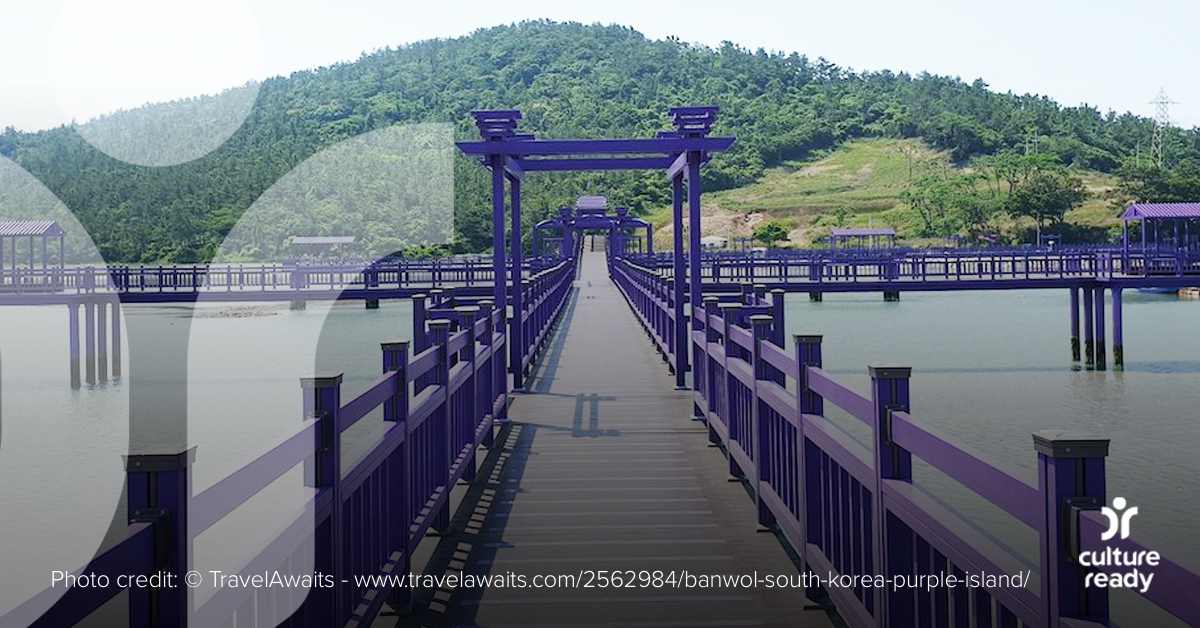The Purple Islands of South Korea
A six-hour drive from Seoul, South Korea, visitors of the remote Banwol island can step into a world of purple. As part of a project started by South Jeolla Province in 2015 to increase tourism to island destinations, Banwol and its sister island Bakji have painted nearly 400 buildings, phone booths, and bridges a purple hue, earning the nickname the Purple Islands.
The purple bellflowers on the island, known as campanula, inspired the colorful direction of the project. Since the idea’s inception in 2015, the 150 residents of Banwol and Bakji island began growing other purple plants like beets and kohlrabi. To increase the colorful atmosphere, residents often wear head-to-toe purple clothing.
To keep with the natural origins of the hue, the local government planted 21,000 square meters of lavender fields and 30,000 New England asters across the location. Overall, they have invested over 4 million dollars in the purple vision of the islands. Banwol even hosts a purple hotel and restaurant that exclusively serves purple food.
Visitors think of the location as a photographer’s paradise, and the Purple Islands are very popular across social media. Even though tourism has increased since the location went purple, it is still a peaceful destination without many crowds.
While many locations lost visitors during the COVID-19 pandemic, domestic tourists in South Korea flocked to the islands of Banwol and Bakji. Due to strict border rules during the COVID-19 pandemic, including a 14-day mandatory quarantine upon entry, the South Korean government focused on highlighting locations within the nation. Between June and August of 2020, 100,000 people visited the Purple Islands, a 20% increase from the prior year.
The Purple Islands are not the first popular tourist destination to revolve around color. Founded in 1474, Chefchaouen, Morocco became a haven for the Jewish community fleeing Portugal and Spain; this Jewish population painted the town a shade of blue to represent good luck and the power of God. Townspeople of Izamal, Mexico, painted the entire location yellow. Rumors say locals picked the color to honor a visit from Pope John Paul II in 1993, but the town had a golden hue long before the 1990s.
Learn More:
South Korea's All-purple Banwol Island
Almost Everything on this Island is Painted Purple
South Korea's Purple Islands Tourism Boost
